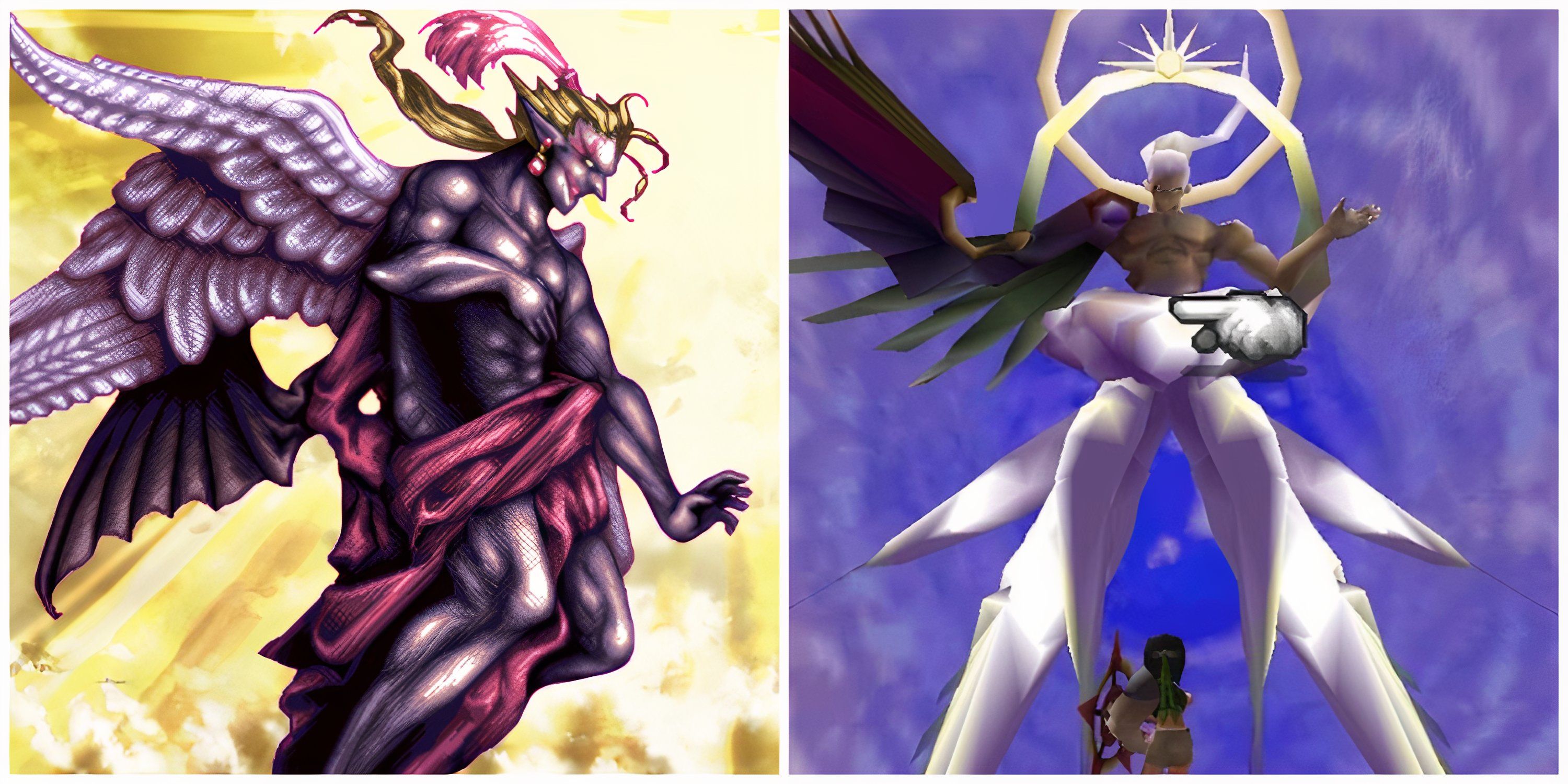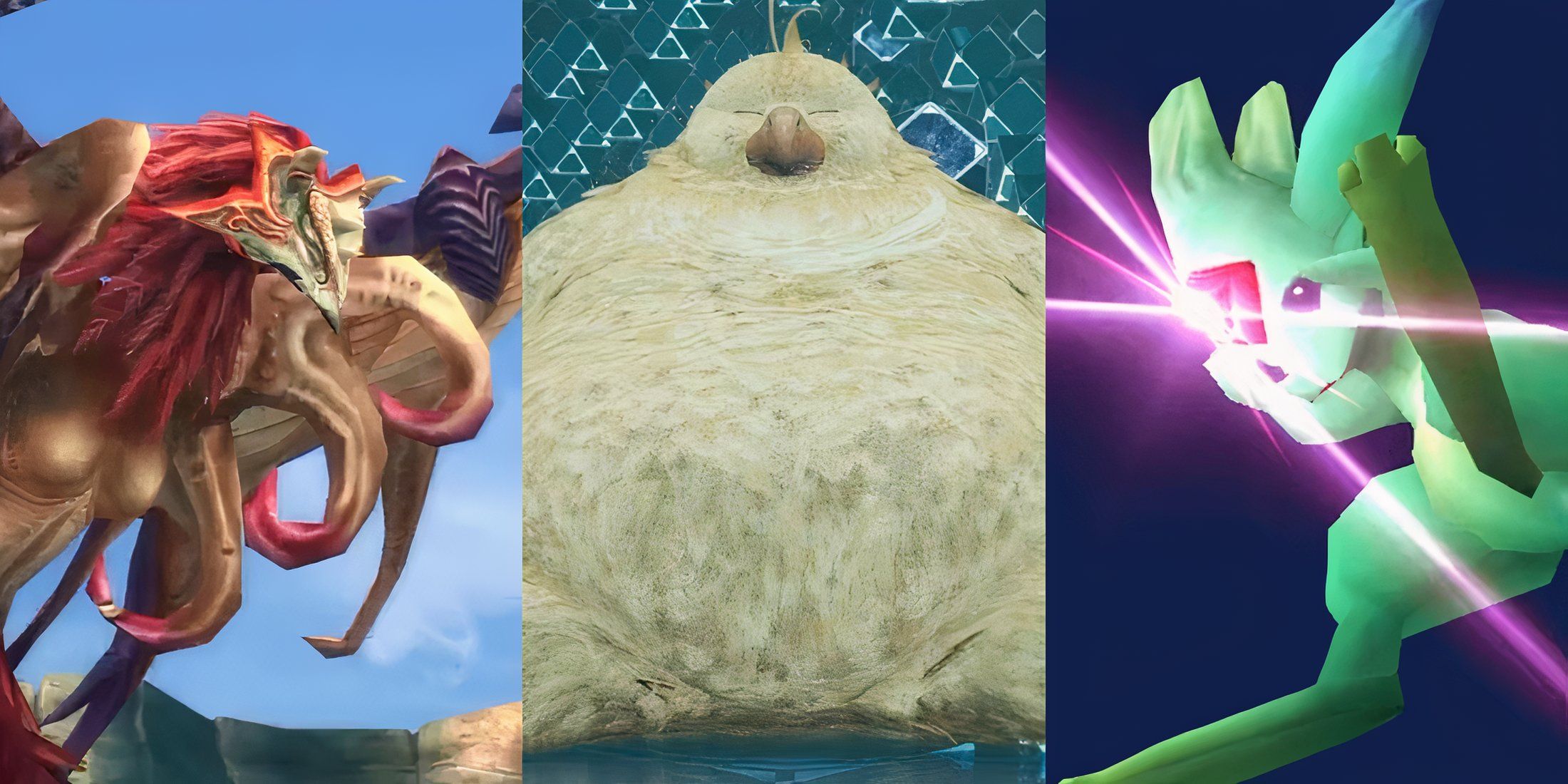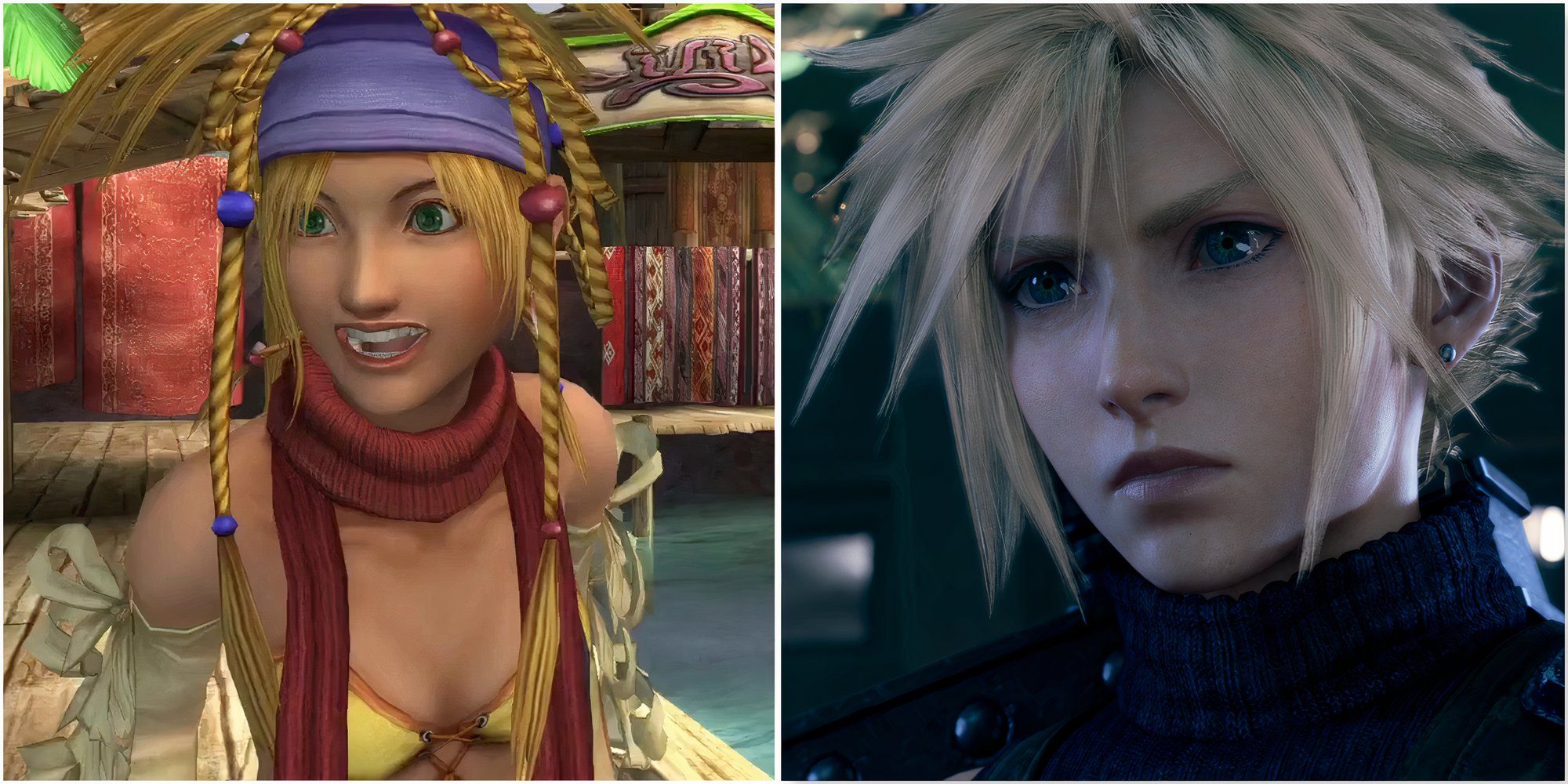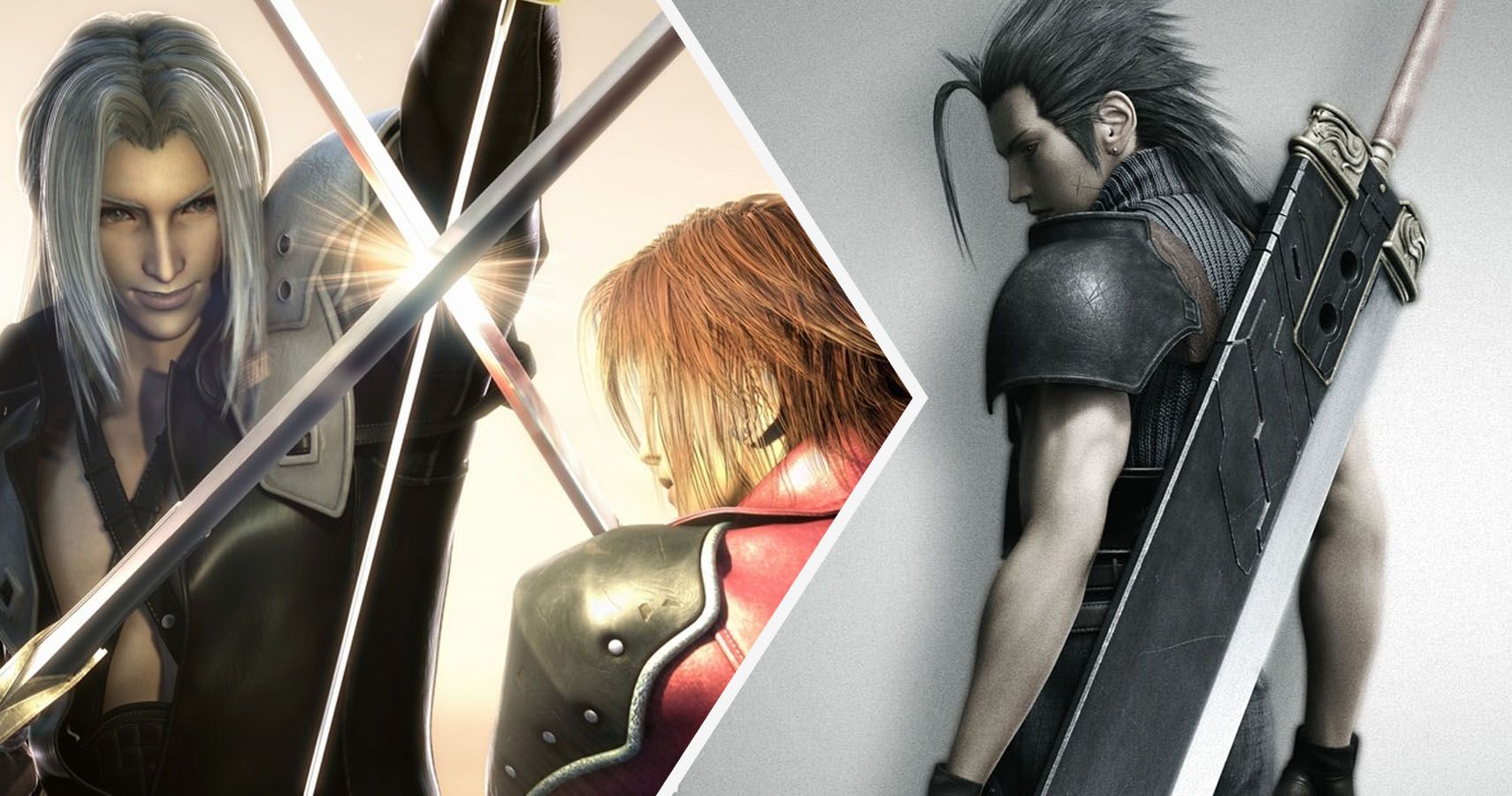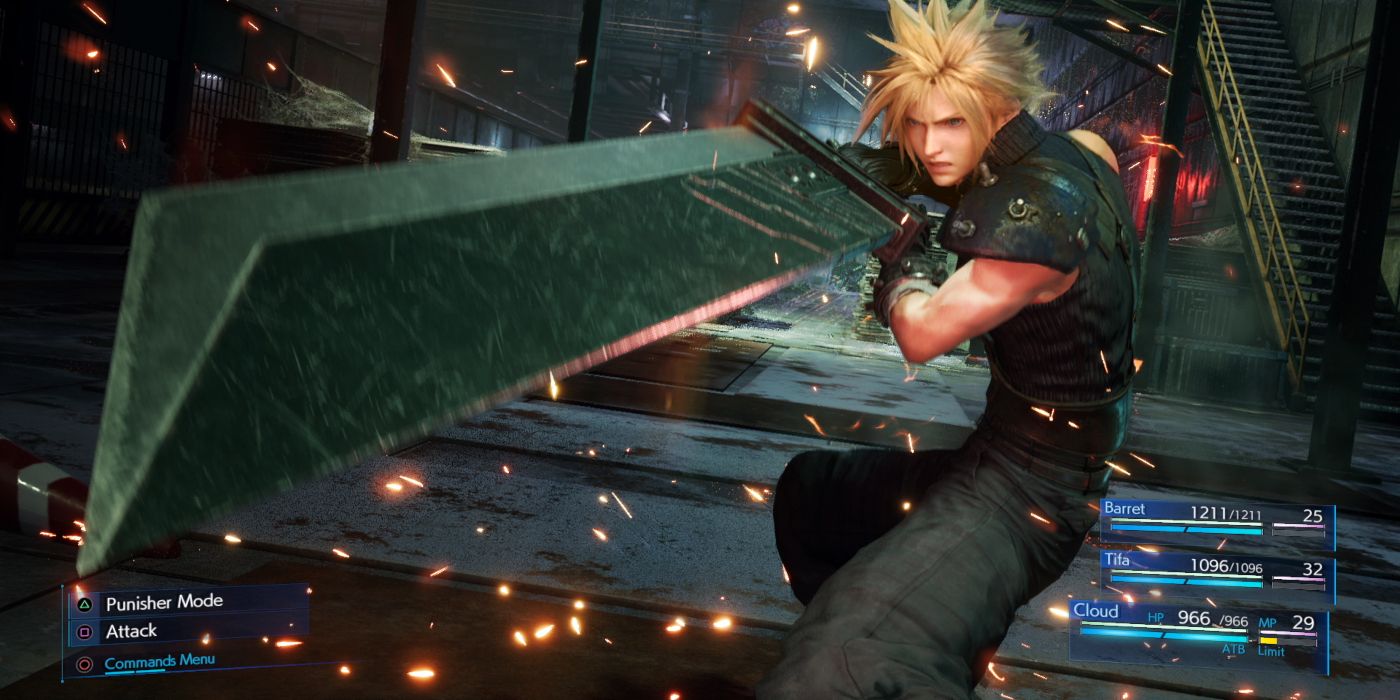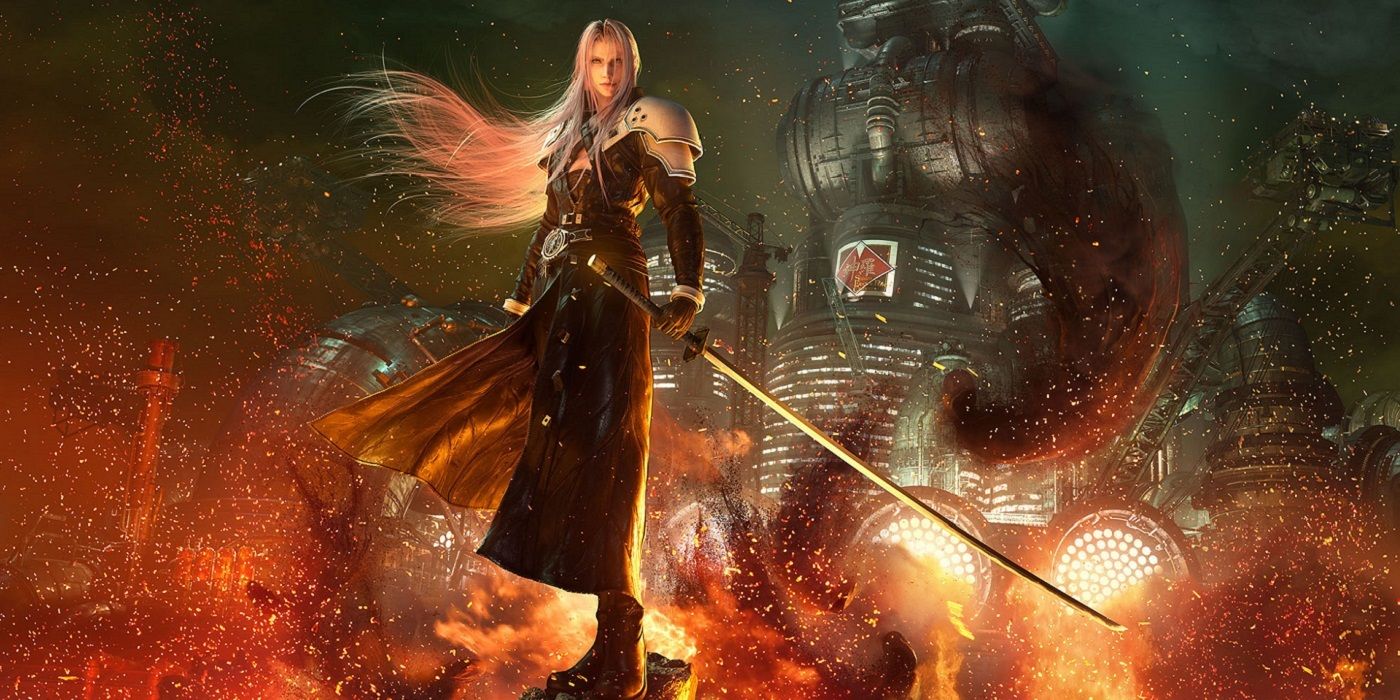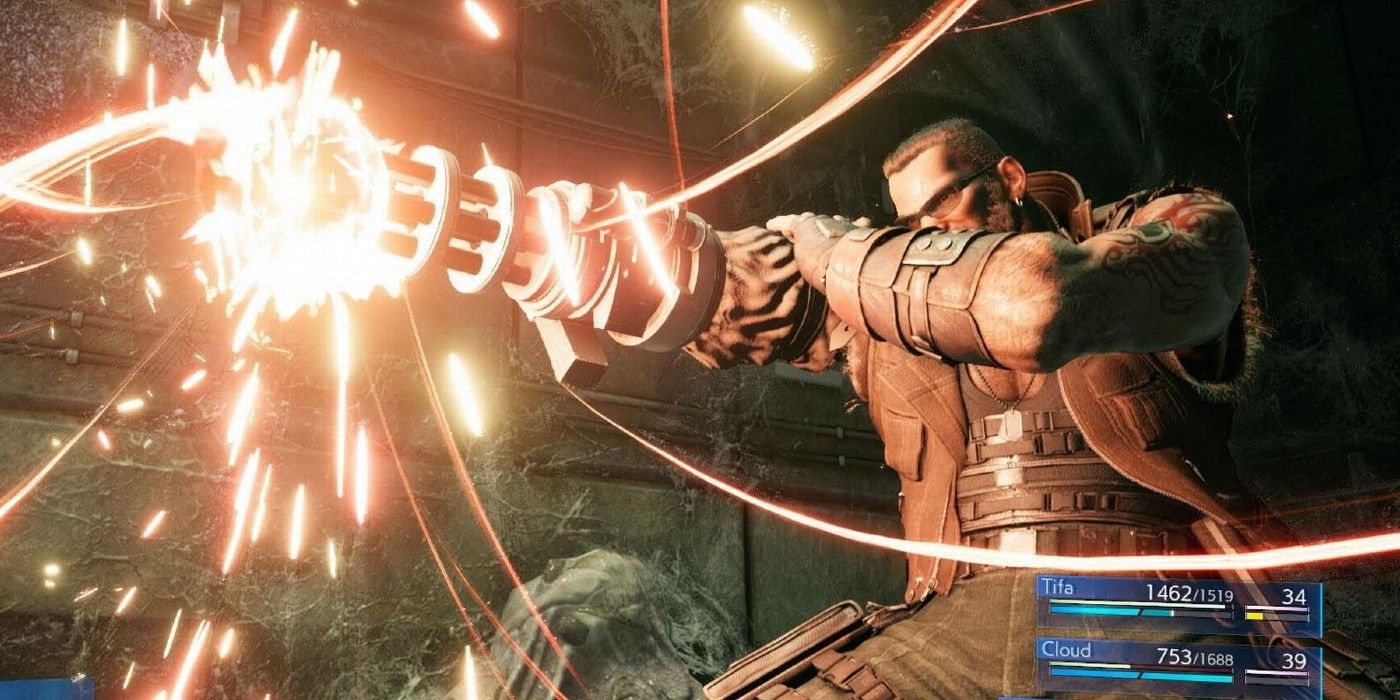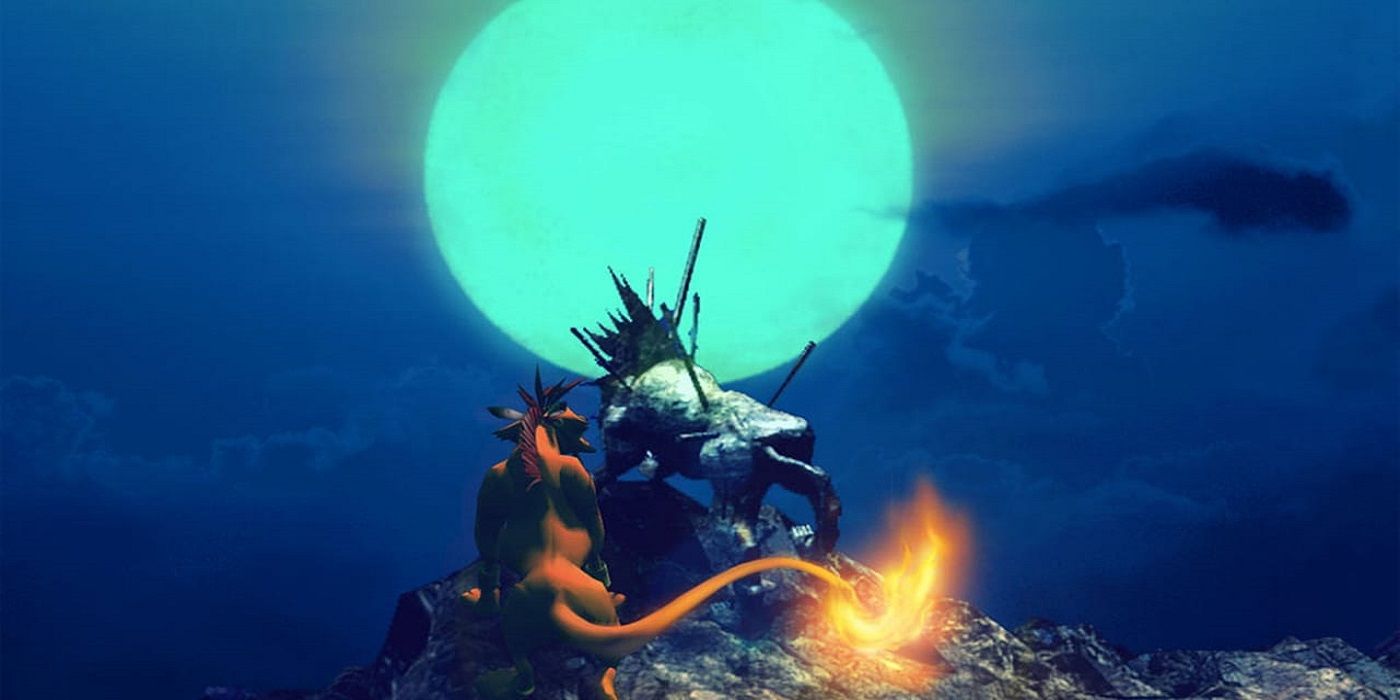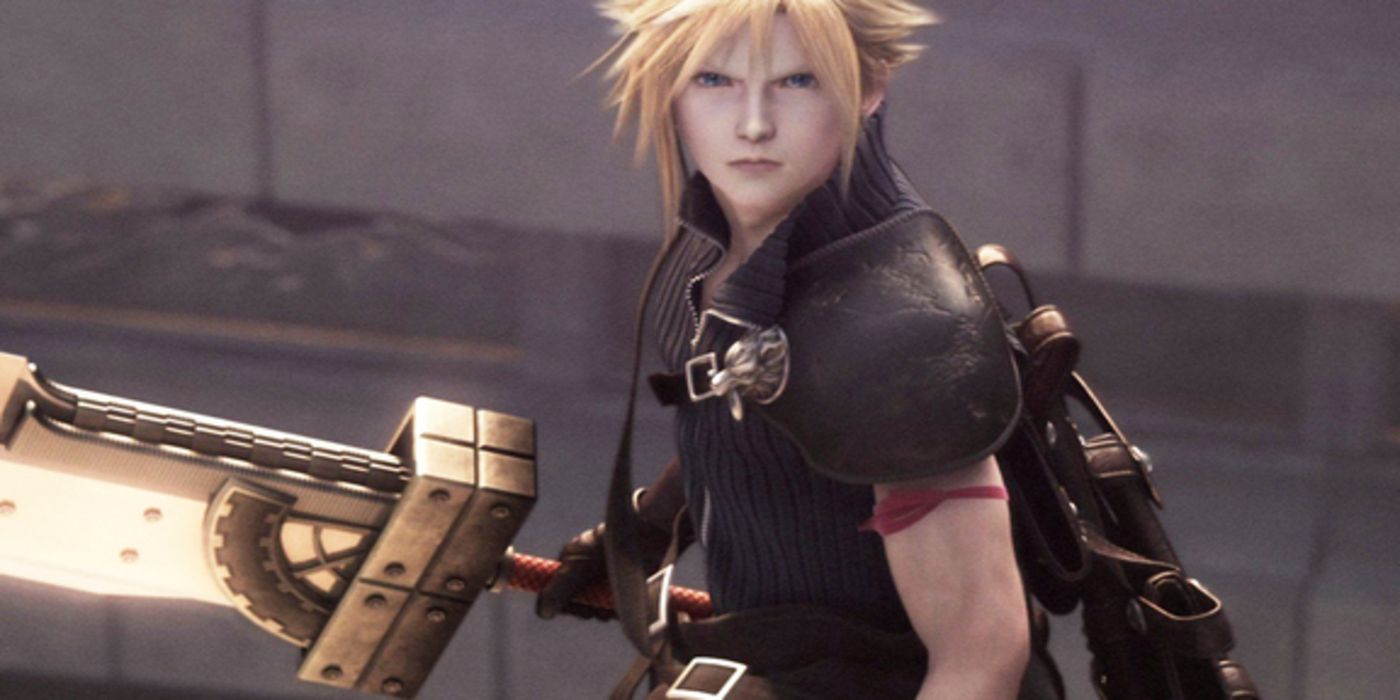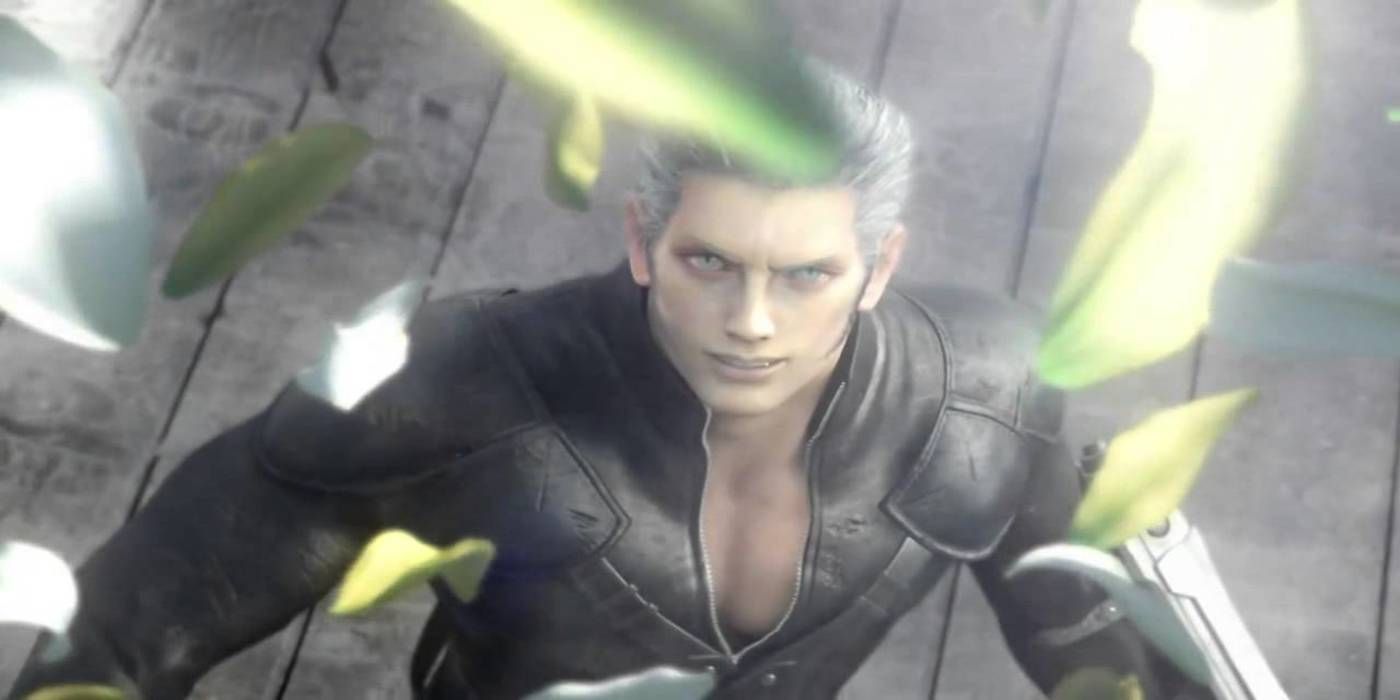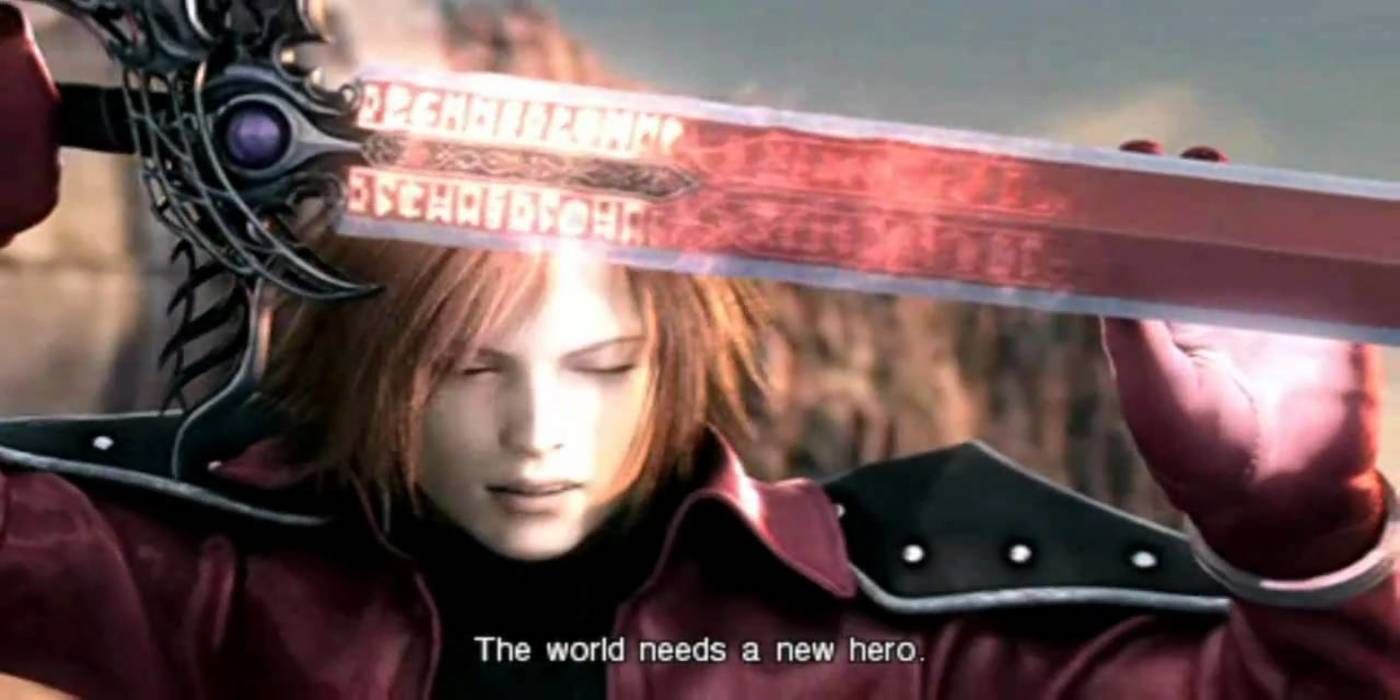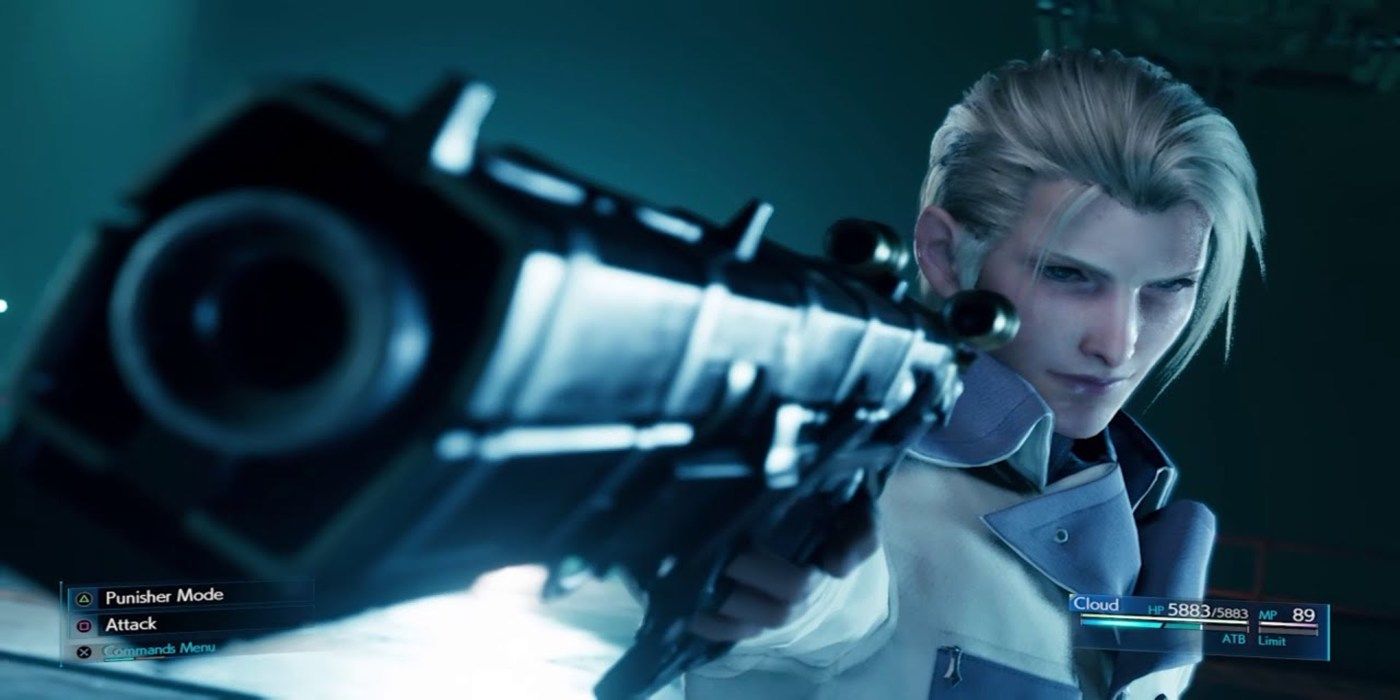Few swords in video gaming carry as much impact as Cloud Strife’s Buster Sword. Among Link’s Master Sword from The Legend of Zelda and Erdrick/Roto’s sword in Dragon Quest, the legendary Buster Sword is as iconic as the Meteor piercing Final Fantasy VII’s logo. As immediately iconic as it is, however, the Buster Sword isn’t the only legendary weapon to come out of Final Fantasy VII.
The Compilation of Final Fantasy VII didn’t just introduce Advent Children, Dirge of Cerberus, and Crisis Core into the world– it captured the sparks lit by the Buster Sword with the introduction of new weapons. From the original RPG all the way to this year’s Remake on the PS4, Final Fantasy VII as a sub-series has been home to some of the most iconic weapons in gaming.
10 Buster Sword (Final Fantasy VII)
The Buster Sword is a blade with quite a bit of history behind it in the context of Final Fantasy VII. Where it’s initially a testament to Cloud’s strength as a SOLDIER 1st Class, it’s eventually recontextualized into a token of Zack Fair’s death– the man whose psyche Cloud adopted in an attempt to process extreme trauma.
A huge slab of iron, the Buster Sword has a Berserk quality to it. Cloud notably ditches the Buster Sword at the start of Advent Children, but the Compilation of Final Fantasy VII on a whole has used the Buster Sword as a symbolic passing of the torch from Zack to Cloud.
9 Masamune (Final Fantasy VII)
Named after Goro Nyudo Masamune, a legendary Japanese swordsmith whose craft takes back to around the late 13th, early 14th centuries, the Masamune has appeared in a number of Final Fantasy games. It’s Sephiroth’s signature version, however, that stands above the rest. Roughly six to eight feet long, the Masamune as depicted in FF7 is monstrous.
The Masamune has consistently remained Sephiroth’s signature weapon, from his days in SOLDIER to his days controlled by JENOVA. Players can even check out its stats when Sephiroth is briefly in the party. With 99 Atk power and a staggering 100% critical rate (plus a perfect hit rate of 255,) the Masamune is out of this world.
8 Gatling Gun (Final Fantasy VII)
Arguably as iconic as the sight of the Buster Sword on Cloud’s back itself is the Gatling Gun surgically attached to Barret Wallace’s arm. While the Gatling Gun makes an already intimidating character even more so, it has deep personal sentiment to Barret– not only symbolizing his desire to destroy Shinra, but serving as a token to his past.
Barret loses his arm trying to save the life of his friend, Dyne. Barret goes on to adopt Dyne’s daughter, Marlene, but not before getting the Gatling Gun attached to his arm. During the events leading into Advent Children, Barret leaves Marlene in Cloud & Tifa’s company to atone for his past and replace his prosthetic arm.
7 Seraph Comb (Final Fantasy VII)
Red XIII’s Seraph Comb doesn’t have nearly as much weight as Cloud’s Buster Sword or Barret’s Gatling Gun, but it represents a very important subsect of weapons in Final Fantasy– overpowered story weapons the party gets super early. Because of the Seraph Comb, Red XIII basically becomes the de-facto best party member alongside Aerith up until Disc 2.
The Seraph Comb is notable for having significant narrative weight to Red XIII, real name Nanaki. Nanaki believed his father, Seto, was a coward for abandoning him and his mother, when the truth was that Seto died defending them. Recognizing his father’s sacrifice, Nanaki is bequeathed the Seraph Comb by Bugenhagen as a memento.
6 Fusion Sword (Advent Children)
Even though Final Fantasy VII: Advent Children recontextualizes Zack’s death as a last will & testament of sorts, the movie still begins with Cloud abandoning the Buster Sword. Cloud’s become his own man by Advent Children, even if he is haunted by his demons. In abandoning the Buster Sword, Cloud starts using the Fusion Sword.
Essentially a series of blades stacked together to make a much larger sword, Cloud can tear apart the Fusion Sword at will, allowing him to dual wield in a split second. Similarly, he can reattach any pieces of the Fusion Sword together, allowing him to pull off some truly insane choreography during his fights with Kadaj and Sephiroth near the end of the film.
5 Cerberus (Advent Children)
Although Vincent Valentine’s signature gun, Cerberus, wouldn’t gain its defining characteristics until Dirge of Cerberus, it was actually introduced in Advent Children, seemingly retconning Vincent’s original starter pistol, Quicksilver. That said, Vincent doesn’t do too much in AC, leaving Cerberus’ best showing to DoC.
Dirge of Cerberus establishes Cerberus as a highly customizable gun. Unlike Cloud who lost access to Materia with his Fusion Sword, Cerberus takes on Materia via keychain. The scope of customization present with Cerberus is probably a bit more than a game like Dirge of Cerberus is worth, but it’s still one of the cooler weapons in FFVII.
4 Souba (Advent Children)
Advent Children primarily focuses on the Remnants of Sephiroth (aka the titular Advent Children) hunting down JENOVA so they can reunite with their mother. All three remnants have their own signature weapons, and while none of them can quite compare to the Masamune, Kadaj’s Souba is cool in its own right.
A sword, the Souba opts for dual blades stemming from a single hilt. There’s a very elegant quality to Kadaj’s Souba, and it flows smoothly in combat. The only real downside to the sword is that Kadaj doesn’t use it nearly enough, even losing Souba before the end of the film.
3 Dual Hound (Advent Children)
Rounding out Kadaj are his brothers Loz and Yazoo. Notably, the trio actually mirror Cloud, Tifa, and Barret as far as weaponry goes. Yazoo is the blandest of the bunch, merely using a shotgun to match Barret’s use of fire “Arms,” but Loz manages to pair excellently with Tifa thanks to his signature weapons: the Dual Hound.
At first glance, Dual Hound simply looks like a pair of gauntlets– a purpose they serve extremely well– but the weapon can actually be retracted into a tazer of sorts. Dual Hound allows Loz to take advantage of a frantically fast fighting style, allowing his fight against Tifa to stand out as one of the movies’ best.
2 Rapier (Crisis Core)
Genesis’ signature weapon from Crisis Core, Rapier, is a rapier in name only. A long, blood red sword, Rapier almost resembles Masamune to some extent. Given that Genesis and Sephiroth are meant to contrast each other, that’s only fair on design-wise. When transformed during the final fights, Genesis’ Rapier also reacts, becoming much wider.
Along with being a solid offensive weapon (one that Genesis evidently has complete mastery over,) Rapier can be infused with magic seemingly without the need of overt Materia slots. That alone is significant in the context of Final Fantasy VII’s universe let alone for a top SOLDIER. Even Sephiorth’s Masamune is loaded with Materia.
1 Custom Shotgun (Final Fantasy VII Remake)
Considering the first part of the Final Fantasy VII Remake only adapted Midgar, there was really no room to show off the game’s biggest baddies at their fullest. With the exception of a new boss fight with Sephiroth at the end of Midgar, Rufus stands out as the most significant boss fight in the Remake.
It’s worth pointing out that Rufus always had a shotgun, but FFVIIR gives it a massive makeover. Now a custom shotgun, Rufus’ bullets can do some serious damage on Cloud while also triggering chain reactions around him. Rufus’ entire fighting style has changed, and it’s his Custom Shotgun that makes it possible.

